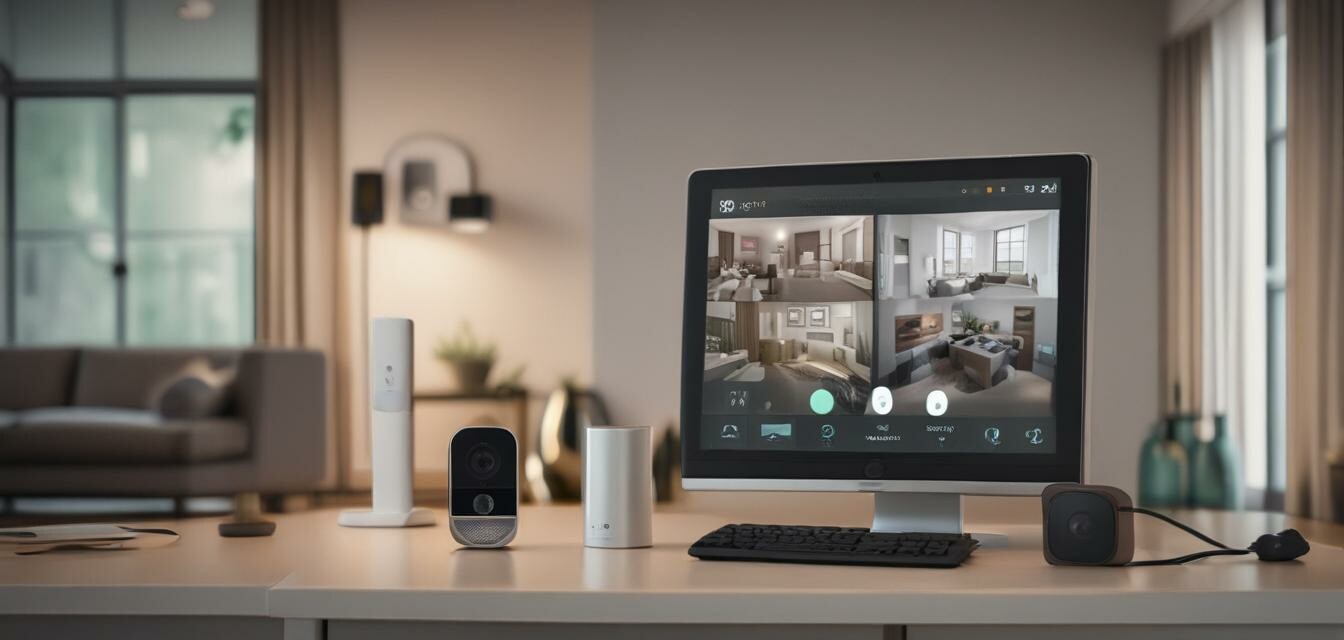
Quick fixes for common smart security issues
- Identify common issues within your smart security systems.
- Learn practical troubleshooting steps for quick resolutions.
- Understand regular maintenance for optimal performance.
- Know when to call for professional help.
Smart security systems are designed to protect your home and ensure peace of mind, but sometimes they can present a few hiccups. Whether it’s connectivity troubles, false alarms, or device malfunctions, recognizing and addressing these issues can help maintain a secure environment. In this guide, we'll explore practical troubleshooting tips for common smart security issues, aiming to ensure minimal downtime and maximum safety.
Common smart security issues
| Issue | Description | Quick Fixes |
|---|---|---|
| Connectivity problems | Devices can't connect to Wi-Fi or mobile networks. | Reset router, check distance, and ensure firmware is updated. |
| False alarms | Unintended alerts triggered by pets or environmental factors. | Reposition sensors, adjust sensitivity settings, or inspect for obstructions. |
| Camera not functioning | The camera is offline or not recording. | Reboot the camera, check power connections, and inspect memory storage. |
| Notifications not received | You aren't getting alerts on your device. | Verify app permissions and notification settings, or reinstall the app. |
| Battery issues | Devices are not powered. | Replace batteries and check for power supply issues. |
Step-by-step troubleshooting guide
1. Connectivity issues
Smart devices rely heavily on a stable internet connection. If you encounter connectivity problems, follow these steps:
- Check if your router is operational.
- Move the affected device closer to the router.
- Restart your router and the smart device.
- Update the firmware on both your router and device.
2. Handling false alarms
False alarms can be annoying and may cause unnecessary panic. To address this issue:
- Revisit the placement of motion sensors; ensure they are not facing windows or pets.
- Adjust the sensitivity settings within the app.
- Consider adding privacy films to windows that might trigger external movements.
3. Troubleshooting camera issues
If your smart camera isn't working correctly, try these solutions:
- Power cycle the camera by unplugging it for a few moments before plugging it back in.
- Ensure that the camera has enough storage available for recording.
- Check the camera's power source and cables to rule out any physical damage.
4. Notification issues
When notifications fail to come through, it’s often linked to settings:
- Review your phone's notification settings to ensure the app is permitted to send alerts.
- Log out and then log back into the security app to refresh it.
- If issues persist, consider uninstalling and reinstalling the app.
5. Addressing battery problems
Batteries are essential for wireless devices to function effectively. For battery-related concerns:
- Inspect batteries regularly for signs of corrosion or depletion.
- Replace all batteries according to the manufacturer's recommendations.
- Ensure that power supplies to wired devices are uninterrupted.
Pros
- Proactive identification of issues can prevent bigger problems.
- Simple fixes can often restore functionality without needing assistance.
- Increases your understanding of your security system’s operation.
Cons
- Some issues may require professional intervention.
- Frequent troubleshooting can be time-consuming.
- Miscalibrated devices can lead to further complications.
Best practices to maintain your smart security system
In addition to troubleshooting, regular maintenance is crucial for the longevity and effectiveness of your system. Here are some best practices:
- Perform regular firmware updates for each device in your system.
- Check battery levels on a monthly basis.
- Schedule routine tests of your alarm systems to ensure responsiveness.
- Keep software and applications up to date for optimal performance.
When to seek professional help
Despite best efforts to troubleshoot, there may be times when it’s best to call in the experts. Here are some signs it's time to do so:
- Continuous connectivity issues even after performing quick fixes.
- Unresolved false alarm problems that disrupt your peace.
- Advanced settings that may require special knowledge to configure.
Conclusion
Every homeowner wants to ensure their property is secure, and understanding how to troubleshoot common smart security issues is crucial in achieving this goal. By familiarizing yourself with these quick fixes, you're well on your way to maintaining a trusted and effective security system. Whether it’s making simple adjustments or knowing when to reach out for help, empowered homeowners can take charge of their security management.
For more on both installation tips and best practices to maximize your smart devices, be sure to check out our other guides on Tips & Best Practices!
